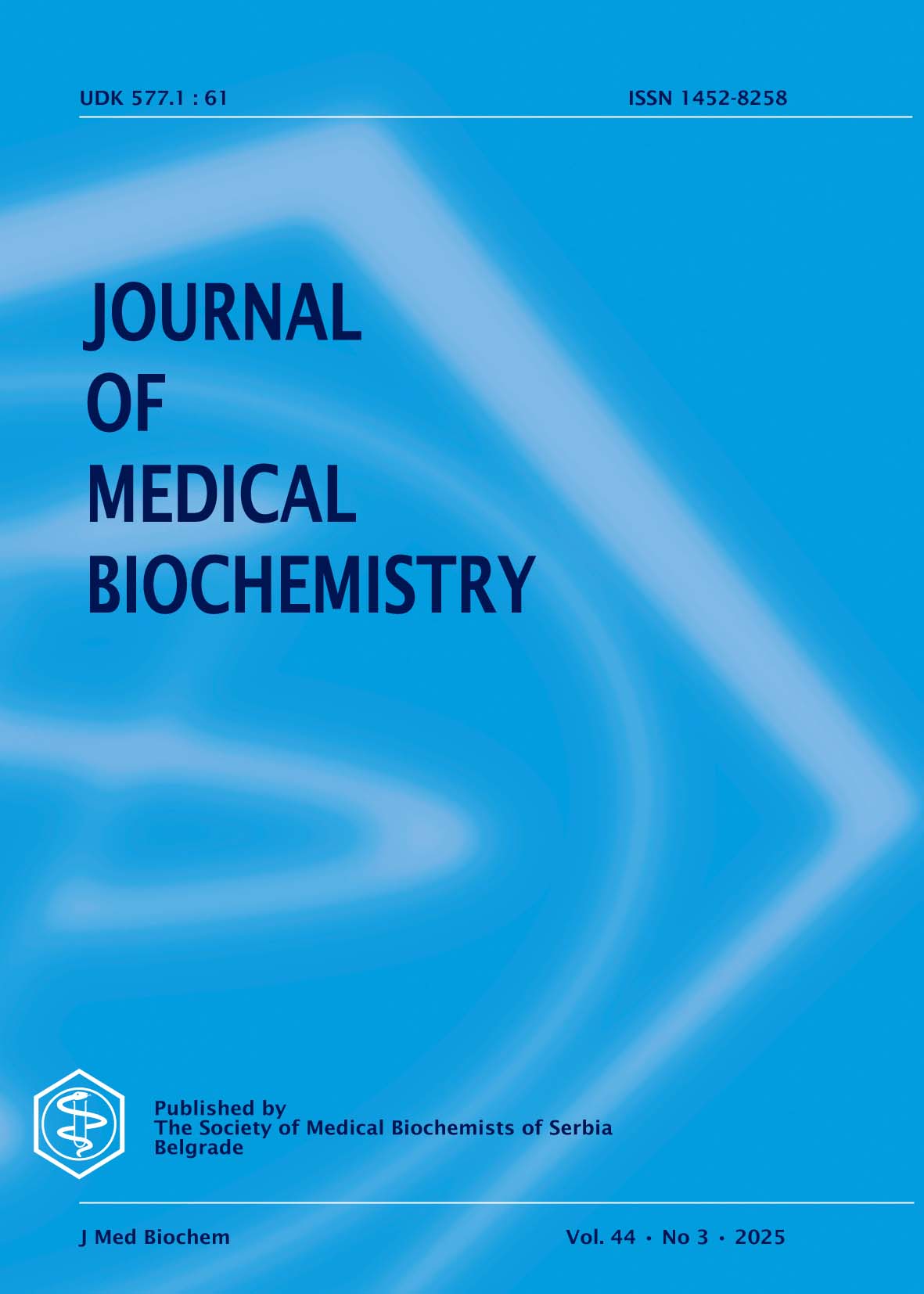. Predictive value of Serum tumor markers (carcinoembryonic antigen , neuron-specific enolase , and squamous cell carcinoma antigen in Non-small Cell Lung Cancer Patients Treated with Programmed Cell Death Protein 1 Inhibitors
Predictive Study of Serum tumor markers in PD-1 Inhibitors in NSCLC
Abstract
Introduction: in patients with advanced non-small cell lung cancer (ANSCLC) undergoing treatment with programmed cell death protein 1 (PD-1) inhibitors (PD-1Is), adverse reactions (ARs) may occur. Establishing a risk assessment model can facilitate personalized treatment. Materials and Methods: clinical data were collected from 215 ANSCLC patients treated with PD-1Is. Patients who experienced ARs were classified as the observation group (OG, 92 cases), while those who did not experience ARs were classified as the control group (CG, 123 cases). A multivariable logistic regression (LR) model was employed to analyze independent risk factors (RFs) associated with ARs, and R Studio software was utilized to create a nomogram predictive model. Results:the concordance index for the nomogram predictive model for ARs in ANSCLC patients treated with PD-1Is was 0.911. The threshold for predicting ARs using the nomogram was greater than 0.25, providing a clinical net benefit superior to individual indicators such as smoking, tumor-node-metastasis (TNM) staging, neutrophil-to-lymphocyte ratio (NLR), systemic immune-inflammation index (SII), and prognostic nutritional index (PNI). The proportion of smokers in the OG was markedly superior to that in the CG (P<0.05). Conclusion: smoking, TNM staging, and peripheral blood indicators such as NLR, SII, and PNI are independent RFs for the occurrence of ARs. The constructed nomogram predictive model demonstrates greater clinical utility than individual indicators, enhancing the accuracy of AR predictions.
References
2. Chen P, Liu Y, Wen Y, Zhou C. Non-small cell lung cancer in China. Cancer Communications, 2022;42(10):937-970.
3. Srivastava S, Mohanty A, Nam A, Singhalm S, Salgian R. Chemokines and NSCLC: emerging role in prognosis, heterogeneity, and therapeutics. Seminars in Cancer Biology, 86(Pt 2):233-246.
4. Benzekry S, Grangeon M, Karlsen M, Alexa M, Bicalho-Frazeto I, Chaleat S, Tomasini P, Barbolosi D, Barlesi F, Greillier L. Machine learning for prediction of immunotherapy efficacy in non-small cell lung cancer from simple clinical and biological data. Cancers, 2021;13(24):6210(1-12).
5. Liu, H. Association between sleep duration and depression: A Mendelian randomization analysis. Journal of Affective Disorders, 2023;335:152-154.
6. Larkin L. Breast cancer genetics and risk assessment: an overview for the clinician. Climacteric : the Journal of the International Menopause Society, 2023;26(3):229-234.
7. Liu H, Tangm T. Pan-cancer genetic analysis of disulfidptosis-related gene set. Cancer Genetics, 2023;278-279:91-103.
8. Shi Y, Shin DS. Dysregulation of SWI/SNF chromatin remodelers in NSCLC: its influence on cancer therapies including immunotherapy. Biomolecules, 2023;13(6):984(1-20).
9. Tian Y, Xu L, Li X, Li H, Zhao M. SMARCA4: current status and future perspectives in non-small-cell lung cancer. Cancer Letters, 2023;554:216022(1-14).
10. Rotow JK, Lee JK, Madison RW, Oxnard GR, Jänne PA, Schrock AB. Real-world genomic profile of egfr second-site mutations and other osimertinib resistance mechanisms and clinical landscape of NSCLC post-osimertinib. Journal of Thoracic Oncology: Official Publication of the International Association for the Study of Lung Cancer, 2024;19(2):227-239.
11. Grant C, Hagopian G, Nagasaka M. Neoadjuvant therapy in non-small cell lung cancer. Critical Reviews in Oncology/Hematology, 2023;190:104080(1-8).
12. Zhou S, Shen C, Che G. [Research progress of treatment for NSCLC in young patients]. Zhongguo Fei Ai Za Zhi., 2022;25(12):888-894.
14. Cascone T, Fradette J, Pradhan M, Gibbons DL. Tumor immunology and immunotherapy of non-small-cell lung cancer. Cold Spring Harbor Perspectives in Medicine, 2022;12(5):a037895(1-23).
13. Xu J, Tian L, Qi W, Lv Q, Wang T. Advancements in NSCLC: from pathophysiological insights to targeted treatments. American Journal of Clinical Oncology, 2024;47(6):291-303.
15. Chen ZY, Duan XT, Qiao SM, Zhu XX. Radiotherapy combined with PD-1/PD-L1 inhibitors in NSCLC brain metastases treatment: The mechanisms, advances, opportunities, and challenges. Cancer Med., 2023;12(2):995-1006.
16. Rousseau A, Parisi C, Barlesi F. Anti-TIGIT therapies for solid tumors: a systematic review. ESMO Open, 2023;8(2):101184(1-9).
17. Ye D, Jin Y, Weng Y., Cui X, Wang J, Peng M, Song Q. High endothelial venules predict response to PD-1 inhibitors combined with anti-angiogenesis therapy in NSCLC. Scientific Reports, 2023;13(1):16468(1-10).
18. Leung CSK, Van den Eynde BJ. Combining personalized neoantigen vaccination with chemotherapy and anti-PD-1 to treat NSCLC. Cancer Cell, 2022;40(9):903-905.
19. Gong Y, Pang H, Yu Z, Wang X, Li P, Zhang Q. Construction of inflammatory associated risk gene prognostic model of NSCLC and its correlation with chemotherapy sensitivity. Annals of Medicine, 2023;55(1):2200034(1-12).
20. Qiao DR, Cheng JY, Yan WQ, Li HJ. PD-L1/PD-1 blockage enhanced the cytotoxicity of natural killer cell on the non-small cell lung cancer (NSCLC) by granzyme B secretion. Clinical & Translational Oncology: Official Publication of the Federation of Spanish Oncology Societies and of the National Cancer Institute of Mexico, 2023;25(8):2373-2383.
Copyright (c) 2025 Yang Wang

This work is licensed under a Creative Commons Attribution 4.0 International License.
The published articles will be distributed under the Creative Commons Attribution 4.0 International License (CC BY). It is allowed to copy and redistribute the material in any medium or format, and remix, transform, and build upon it for any purpose, even commercially, as long as appropriate credit is given to the original author(s), a link to the license is provided and it is indicated if changes were made. Users are required to provide full bibliographic description of the original publication (authors, article title, journal title, volume, issue, pages), as well as its DOI code. In electronic publishing, users are also required to link the content with both the original article published in Journal of Medical Biochemistry and the licence used.
Authors are able to enter into separate, additional contractual arrangements for the non-exclusive distribution of the journal's published version of the work (e.g., post it to an institutional repository or publish it in a book), with an acknowledgement of its initial publication in this journal.

